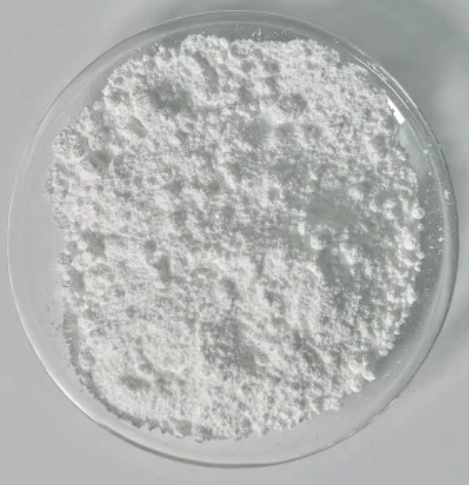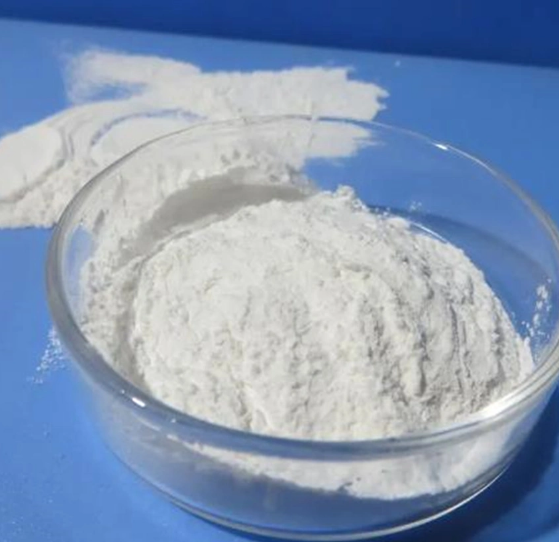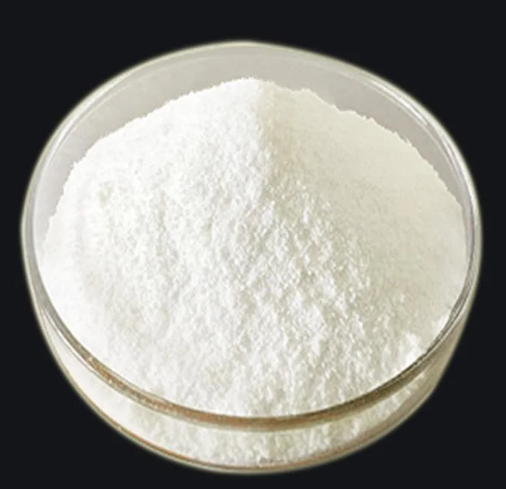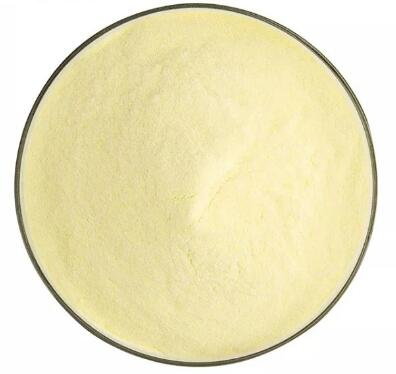-

CABS CAS:161308-34-5 Manufacturer Price
It is commonly used as a buffering agent in various biological and biochemical applications.
CABS is known for its ability to maintain a stable pH level in solutions, making it an ideal choice for buffering systems in laboratory experiments and medical research. Its buffering capacity is particularly effective within the pH range of 8.6 to 10. Medical and diagnostic procedures, such as enzyme activities, electrophoresis, and immunohistochemistry, often utilize CABS as a buffering agent to maintain pH stability and improve reaction efficiency.
It is important to note that CABS can be sensitive to temperature changes and may not be suitable for some applications requiring extreme temperature ranges. Additionally, appropriate safety measures should be followed when handling CABS, as it can be irritating to the skin, eyes, and respiratory system.
-

ADOS CAS:82692-96-4 Manufacturer Price
N-Ethyl-N-(2-hydroxy-3-sulfopropyl)-3-methoxyaniline sodium salt dihydrate, also known as EHS, is a chemical compound used in various applications in chemistry and biochemistry. It is a water-soluble compound derived from the parent compound 2-hydroxy-3-sulfopropyl-3-methoxyaniline.
EHS is commonly used as a pH indicator, specifically in the pH range of 6.8 to 10. EHS is typically colorless in its acidic form but changes to a blue color when exposed to alkaline conditions. This color change can be visually observed, making it useful for monitoring pH changes in solutions.
In addition to its pH indicator properties, EHS has also been utilized in various analytical and biochemical assays. For instance, it can be employed as a dye for protein staining in gel electrophoresis, helping to visualize and quantify protein samples. EHS has also found applications in enzyme assays, where it can be used to measure enzyme activities or detect enzymatic reactions.
-

METHYL-BETA-D-GALACTOPYRANOSIDE CAS:1824-94-8
Methyl-beta-D-galactopyranoside is a chemical compound typically derived from galactose. It is a methylated form of beta-D-galactose, where a methyl group replaces one of the hydroxyl groups of the sugar molecule. This modification alters the properties of galactose, making it more stable and suitable for various applications in biochemistry and molecular biology. Methyl-beta-D-galactopyranoside is commonly used as a substrate in enzyme assays, particularly in studies involving the activity of beta-galactosidase. It is also utilized as a molecular probe to study carbohydrate recognition and interactions, especially in lectin-mediated processes.
-

2,3,4,6-TETRA-O-BENZOYL-ALPHA-D-GLUCOPYRANOSYL BROMIDE CAS:14218-11-2
2,3,4,6-Tetra-O-benzoyl-alpha-D-glucopyranosyl bromide is a chemical compound that belongs to the class of sugar derivatives. It consists of a glucose molecule with four benzoyl groups attached to its hydroxyl groups, along with a bromide atom at the anomeric position.
This compound is primarily used in organic and medicinal chemistry as a protecting group for the hydroxyl functionality of glucose. The benzoyl groups serve to temporarily mask the reactive hydroxyl groups, making them less susceptible to unwanted chemical reactions during synthetic processes. This allows for selective functionalization of specific hydroxyl groups in glucose derivatives.
Furthermore, the benzoyl-protected glucose derivatives can be used as building blocks for the synthesis of various glycosides and glycoconjugates. Glycosides are compounds formed by the linkage of a sugar molecule to another moiety, such as a drug or a natural product, and they find applications in drug development and chemical biology.
-

MOPS CAS:1132-61-2 Manufacturer Price
MOPS, or 3-(N-morpholino)propanesulfonic acid, is a zwitterionic buffering agent commonly used in biological and biochemical research. It is primarily employed to maintain a stable pH in the range of 6.5 to 7.9. MOPS is widely used in cell culture, molecular biology techniques, protein analysis, enzyme reactions, and electrophoresis. Its main function is to regulate and stabilize the pH of experimental solutions, ensuring optimal conditions for various biological processes. MOPS is a valuable tool in scientific research for maintaining a consistent and optimal pH environment in a range of applications.
-

Tris Base CAS:77-86-1 Manufacturer Price
Tris Base, also known as Tromethamine or THAM, is an organic compound commonly used in the field of biochemistry and molecular biology. It is a white, crystalline powder that is highly soluble in water and has a characteristic amine odor. Tris Base is often used as a buffering agent to maintain a stable pH in various biological experiments and procedures, such as DNA and protein studies. It can also be used in the formulation of pharmaceuticals and in the production of surface-active agents. Overall, Tris Base is an essential component in many laboratory applications where maintaining a precise pH is crucial.
-

4-Morpholineethanesulfonic acid CAS:4432-31-9
4-Morpholineethanesulfonic acid, commonly known as MES, is a zwitterionic compound that serves as a buffering agent in biological and biochemical research. It helps maintain a stable pH around 6-7.5 and is widely used due to its low toxicity and compatibility with various biological systems and enzymes. MES is used in electrophoresis, enzyme studies, cell culture, protein purification, and other experimental procedures requiring precise pH control.
-

4-NITROPHENYL-ALPHA-D-MANNOPYRANOSIDE CAS:10357-27-4
4-Nitrophenyl-alpha-D-mannopyranoside is a chemical compound derived from the sugar mannose. It consists of a mannose molecule attached to a nitrophenyl group. This compound is often used in biological and biochemical research as a substrate for the detection and measurement of enzyme activity. Specifically, it can be used to study the activity of enzymes that hydrolyze or modify mannose-containing substrates. The nitrophenyl group attached to the mannose molecule allows for the measurement of enzyme activity by monitoring the release of the nitrophenyl moiety. This compound is commonly used in assays to study enzymes involved in carbohydrate metabolism or glycosylation processes.
-

P-NITROPHENYL BETA-D-LACTOPYRANOSIDE CAS:4419-94-7
P-Nitrophenyl beta-D-lactopyranoside, also known as PNPG, is a compound often used in enzymatic assays to measure the activity of beta-galactosidase, an enzyme involved in carbohydrate metabolism. PNPG is a synthetic substrate that can be cleaved by beta-galactosidase, resulting in the release of a yellow-colored product. The extent of substrate hydrolysis can be quantified spectrophotometrically by measuring the absorbance of the product at a specific wavelength. This allows researchers to assess the activity and kinetics of beta-galactosidase in various contexts, such as studying enzyme function, screening for enzyme inhibitors or activators, or evaluating the effects of mutations on enzyme activity.
-

2-NAPHTHYL-BETA-D-GALACTOPYRANOSIDE CAS:312693-81-5
2-NAPHTHYL-BETA-D-GALACTOPYRANOSIDE is a chemical compound commonly used in biochemical research and analysis. It is a derivative of galactose, a type of sugar. The compound is often used as a substrate for detecting the activity of beta-galactosidase, an enzyme present in many organisms, including bacteria.When beta-galactosidase is present, it cleaves 2-NAPHTHYL-BETA-D-GALACTOPYRANOSIDE into naphthol and galactose. The resulting naphthol molecule can be easily detected by its absorption of ultraviolet light, allowing scientists to measure the activity of beta-galactosidase. This assay is commonly used in molecular biology and genetics research, for applications such as studying gene regulation, protein expression, and cell viability.
-

MOPSO sodium salt CAS:79803-73-9
MOPSO sodium salt is a chemical compound derived from MOPS (3-(N-morpholino)propanesulfonic acid). It is a zwitterionic buffer salt, meaning it contains both a positive and negative charge, which allows it to effectively maintain pH stability in various biological and biochemical experiments.
The sodium salt form of MOPSO offers advantages such as improved solubility in aqueous solutions, making it easier to handle and prepare. It is commonly used as a buffering agent in cell culture media, molecular biology techniques, protein analysis, and enzyme reactions.
MOPSO sodium salt helps maintain the pH of growth medium in cell culture, providing a stable environment for cell growth and function. In molecular biology techniques, it stabilizes the pH of reaction mixtures and running buffers, ensuring accurate and reliable results in DNA and RNA isolation, PCR, and gel electrophoresis.
It is also utilized in protein analysis, acting as a buffering agent during protein purification, quantification, and electrophoresis. MOPSO sodium salt ensures optimal pH conditions for protein stability and activity throughout these procedures.
-

2-NITROPHENYL-BETA-D-GLUCOPYRANOSIDE CAS:2816-24-2
2-Nitrophenyl-beta-D-glucopyranoside is a chemical compound consisting of a glucopyranoside molecule attached to a nitrophenyl group. It is commonly used as a substrate in enzymatic assays to detect and quantify the activity of enzymes such as beta-glucosidase. The nitrophenyl group can be cleaved by the enzyme, resulting in the release of a yellow-colored product that can be measured spectrophotometrically. This compound is particularly useful in studying enzyme kinetics and high-throughput screening of enzyme inhibitors or activators. It is also employed in biochemical research for the investigation of carbohydrate metabolism and as a glycosidic-linkage-specific substrate.

